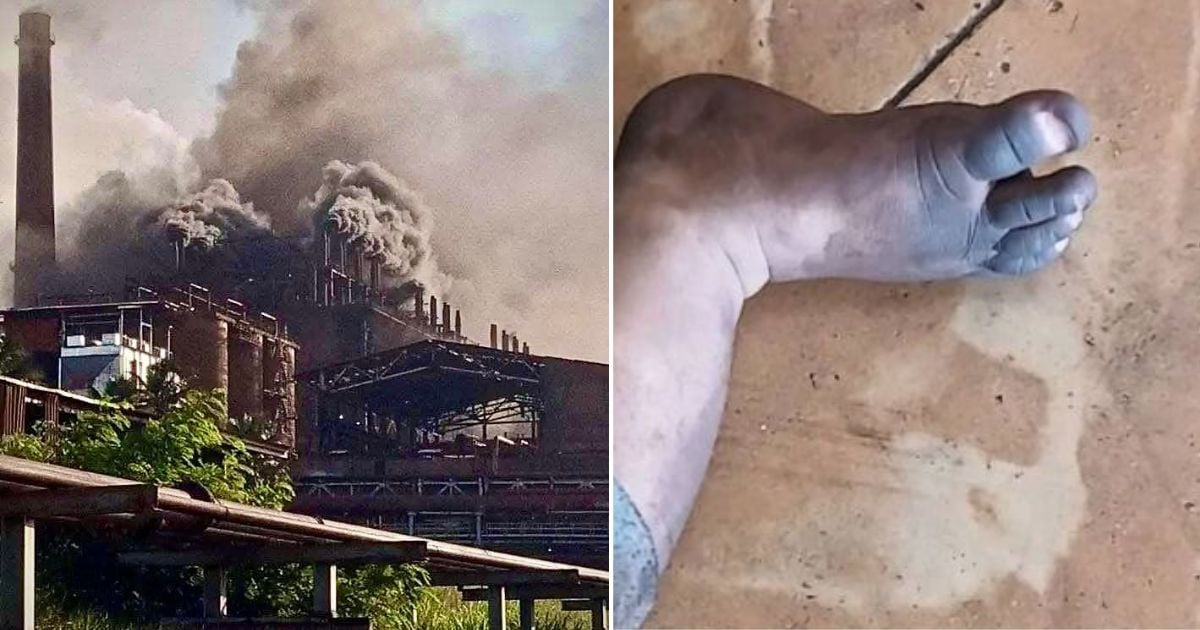On Thursday, Cuban activist Yamilka Lafita Cancio, known on social media as Lara Crofs, publicly accused the Cuban government of decades of environmental neglect and industrial pollution in the town of Moa, located in Holguín province. Her open letter, titled "Moa Suffers from Toxic Air," was shared on her Facebook profile and addressed to key government bodies such as the Ministry of Science, Technology and Environment (CITMA), the Ministry of Energy and Mines, the Council of State, and the Communist Party of Cuba. She holds these organizations accountable for the ongoing and systematic harm to both the health of Moa's residents and the natural environment.
Lafita's letter specifically targets the nickel industry, particularly the Comandante Ernesto Che Guevara plant, which is operated by the state. She claims it is the primary source of harmful emissions that have polluted Moa's air, water, and soil for more than four decades. "For those living there, what some dismiss as 'minor inconveniences' are actually a constant exposure to toxic gases, heavy metal-laden dust, and worsening health conditions, with no effective state response," Lafita asserts.
Citing both national and local studies—some conducted by official entities—the letter contends that Moa suffers from some of the worst air quality in Cuba, with dangerous levels of sulfur dioxide (SO₂), nitrogen dioxide (NO₂), and fine particulate matter (PM10 and PM2.5), all of which exceed internationally recognized safety limits. This was acknowledged by the regime just this Wednesday. According to the activist, these pollutants have led to a troubling rise in respiratory illnesses, lung cancer, childhood asthma, chronic bronchitis, and emphysema, particularly affecting children, the elderly, and mining sector workers.
Lafita also highlights the continuous dumping of industrial waste into the Moa River and bay, resulting in biodiversity loss, water contamination, and the decline of traditional livelihoods like artisanal fishing. "Images are heart-wrenching: rooftops covered in black dust, trees turned gray, homes coated in soot. And all this with the state's knowledge," she adds.
The letter challenges the official narrative, dismissing it as not merely a communication issue as the regime-aligned media suggests, but rather a political unwillingness to act and modernize industrial processes. "The people of Moa are not ignorant. They know the emissions suffocating them are due to industrial processes lacking proper filters or having malfunctioning ones," she asserts.
She criticizes the government's failure to invest in clean technologies or implement urgent measures to mitigate environmental impact. Moreover, she points out that Cuba's existing environmental laws—such as the Mining Law and regulatory decrees—are violated daily without legal repercussions.
In her demands, Lafita calls for the immediate installation of clean technologies and industrial filters in all plants operating in Moa, as well as the conduct and publication of independent studies on the region's environmental and health impacts. She also insists on prioritizing attention to vulnerable groups, including children, the elderly, and those with chronic illnesses; the creation of a citizen-led environmental monitoring commission with genuine participation from affected residents; and finally, for the government to publicly assume institutional responsibility for the harm inflicted on both the population and the natural surroundings.
"Breathing should not be a risk. Living in Moa should not be a life sentence," the document concludes. Lafita invites others to join her by signing the letter, which she intends to submit to the authorities on the coming Monday. She plans to update the text daily with new signatures.
Key Issues in Moa's Environmental Crisis
What are the main sources of pollution in Moa?
The main sources of pollution in Moa are primarily linked to the nickel industry, especially the Comandante Ernesto Che Guevara plant, which releases toxic emissions into the air, water, and soil.
How has the pollution affected the health of Moa's residents?
Pollution in Moa has resulted in a significant increase in respiratory illnesses, lung cancer, childhood asthma, chronic bronchitis, and emphysema, with children, the elderly, and mining workers being the most affected.
What actions does the letter demand from the Cuban government?
The letter demands the installation of clean technologies and industrial filters, independent environmental studies, prioritization of vulnerable groups, a citizen-led environmental commission, and government accountability for the damage caused.
